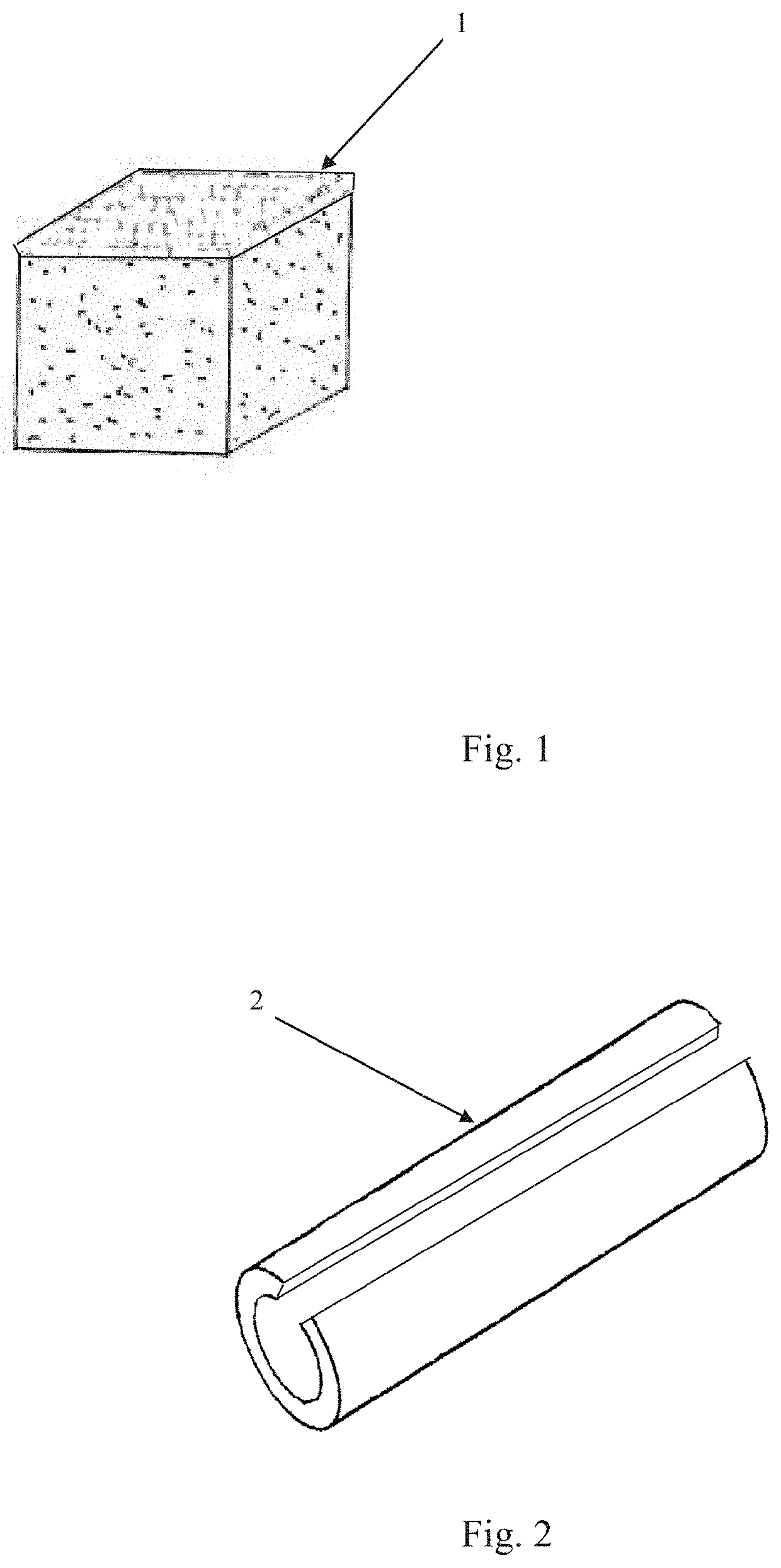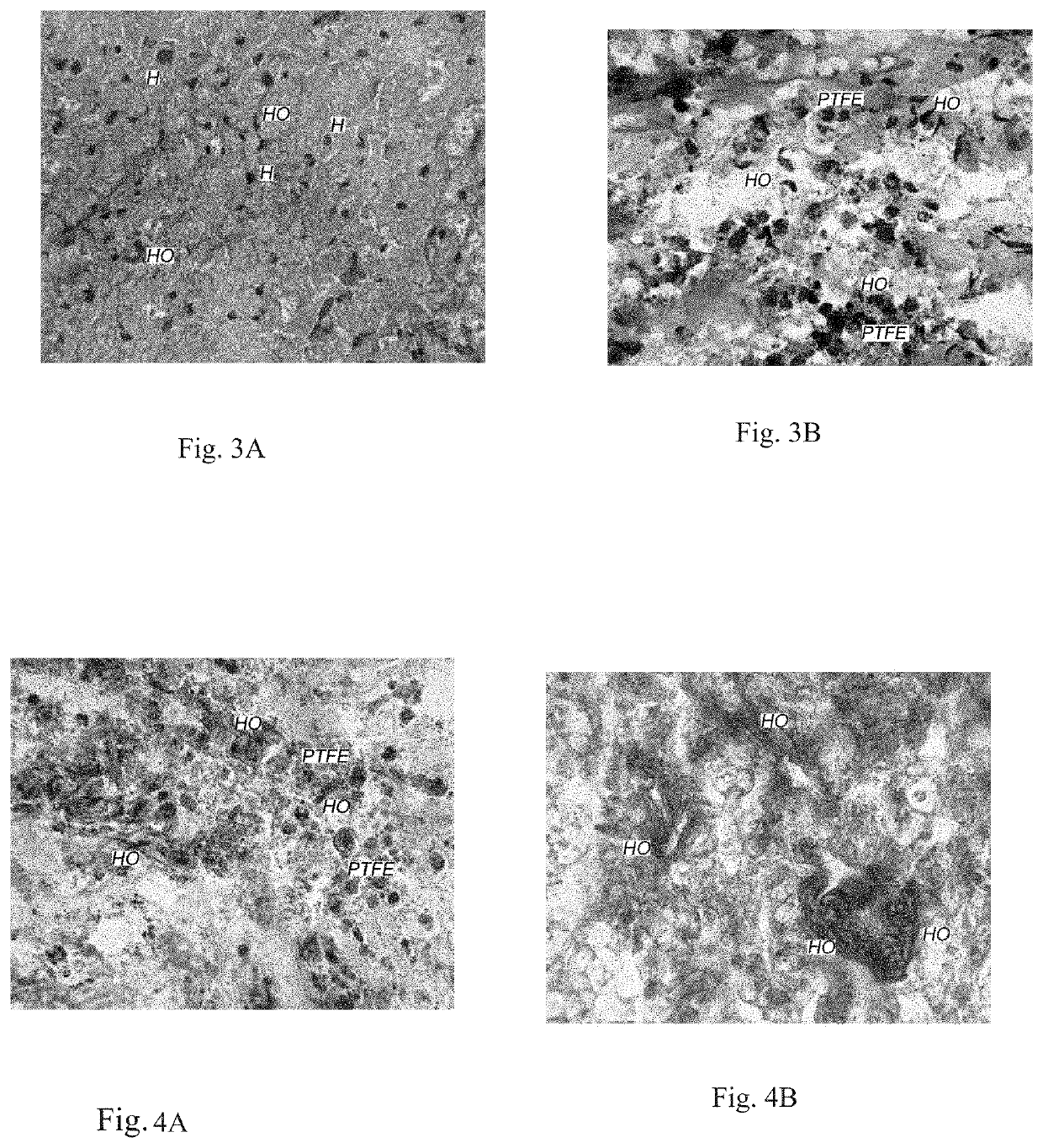Implant for Injured Nerve Tissue Prosthetics, Method of Surgical Treatment for Injured Nerve Tissue and Use of Porous Polytetrafluorethylene
a nerve tissue and prosthetic technology, applied in the field of medicine, can solve the problems of insufficient consideration, insignificant clinical effect, and inability to use the above-mentioned known methods for effective restoration of spinal cord function,
- Summary
- Abstract
- Description
- Claims
- Application Information
AI Technical Summary
Benefits of technology
Problems solved by technology
Method used
Image
Examples
example 1
[0053]The operation of half-transsection of the dog's spinal cord in the region of T11 segment was made with the further implantation of the implant in the form of a porous PTFE plate, according to the disclosure, in the injury area. The restoration of the motor activity of the experimental animal was recorded.
[0054]Three months after the operation, the spinal cord fragments in the place of contact with the implant as well as the spinal cord fragment of the intact animal were removed. FIGS. 3-6 show (×400) the results of the examination of the spinal cord of the intact (control) dog (a) and experimental dog (b).
[0055]Materials and Methods
[0056]The material of the study is the dog spinal cord fragments in the places of contact with the grafts. After removal the test material was placed on ice.
[0057]The sections were divided in groups depending on morphological examinations.
[0058]Series 1. Stain with haematoxylin-eosin (general histology).
[0059]Series 2. Nissl stain (visualization of ...
example 2
[0077]The spinal cord of rats was the object of the study; rats were divided into 3 groups: group 1—intact rats (control), group 2—the rats which were subjected to half-transsection of the spinal cord, group 3—the rats which were subjected to half-transsection of the spinal cord with further implantation of the PTFE in the injury region. Observation period—2 months.
[0078]The works was performed with the use of the histological (stain with haematoxylin and eosin), neurohistological (Nissl stain) and histochemical (detection of acetylcholinesterase, succinate and lactate dehydrogenases (ACE, LDG and SDG) activity examinations.
[0079]The frozen sections of the spinal cord were stained with haematoxylin and eosin and toluidine blue, and then they were examined at the light-optic level.
[0080]FIG. 7A shows the section of the spinal cord area in the region of the thoracic vertebra (T11) of the intact rat. Treatment with haematoxylin-eosin (×400).
[0081]FIG. 7B shows the section of the rat sp...
PUM
| Property | Measurement | Unit |
|---|---|---|
| pore sizes | aaaaa | aaaaa |
| sizes | aaaaa | aaaaa |
| length | aaaaa | aaaaa |
Abstract
Description
Claims
Application Information
 Login to View More
Login to View More - R&D
- Intellectual Property
- Life Sciences
- Materials
- Tech Scout
- Unparalleled Data Quality
- Higher Quality Content
- 60% Fewer Hallucinations
Browse by: Latest US Patents, China's latest patents, Technical Efficacy Thesaurus, Application Domain, Technology Topic, Popular Technical Reports.
© 2025 PatSnap. All rights reserved.Legal|Privacy policy|Modern Slavery Act Transparency Statement|Sitemap|About US| Contact US: help@patsnap.com



